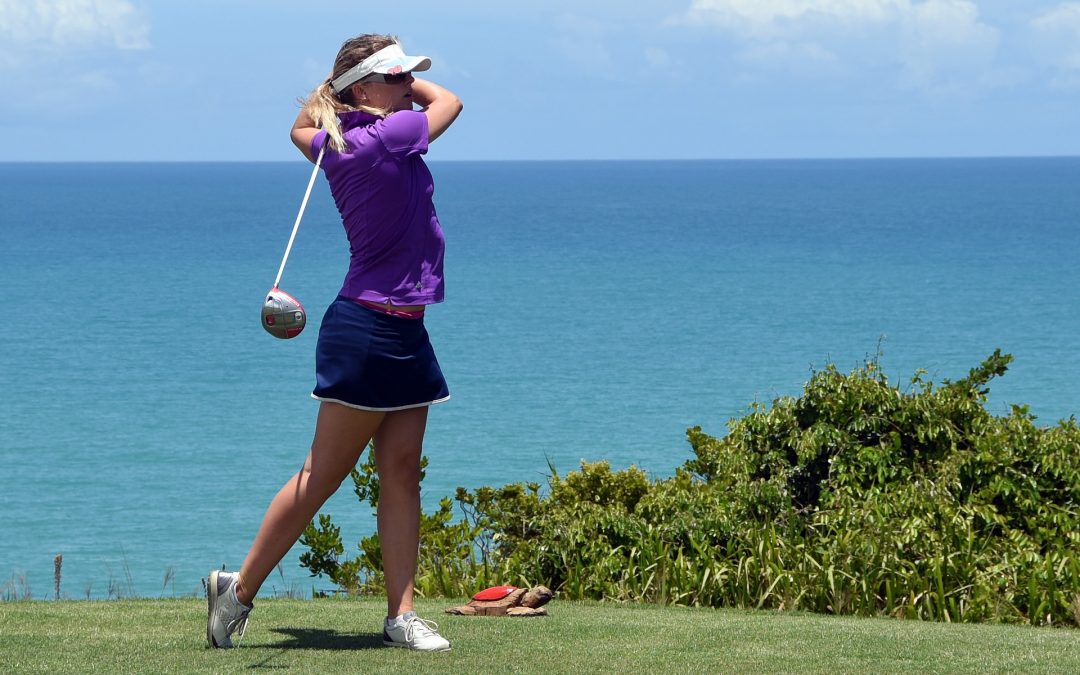This time of year, amateur and professional golfers alike head outdoors to enjoy the sport. If off-season and pre-season conditioning exercise programs have been neglected, pains, injuries and physical limitations frequently set-in. The most common include: tight or sore chest muscles; decreased flexibility and range of motion, particularly in the torso; strained shoulders and back discomfort. Professional golfers usually have more repetitive motion injuries from extensive hours of practice, while amateurs are more likely to get injured due to lack of physical conditioning; poor swing technique and improper club grip. Body mechanics and core strength play a key role.
Golf and Core Strength
Golf requires the body to habitually bend and twist (tiresome, repetitive motions) that can eventually strain the back and shoulders and create multiple muscle imbalances that precede an injury. To help prevent injuries while increasing performance, golfers should focus on lumbar stabilization, body alignment, stretching exercises and power to increase rotational strength for the swing. Weight lifting for golf may prove beneficial for over-all strength gains; however, it is of little use without enhanced flexibility and a strong core. Core muscles assist in maintaining balance, improving back health and increasing the safety ability to move the trunk through all planes of motion. For example: If a golfer can utilize the force of trunk rotation instead of brute force from supplementary muscles to drive the ball, the chance of a shoulder or low back injury can be decreased.
Muscle Symmetry
A golfer’s healthy playing stance begins with the maintenance of muscle symmetry and correction of muscle imbalances. Players need collective strength and stability in the upper body, lower body, postural musculature and rotational core muscles in order to enhance muscular symmetry. Asymmetry becomes prevalent when a golfer favors a dominant side. In this case, stronger muscles on one side of the body become too tight, while the weaker side has too much elasticity. When muscle symmetry is improved with conditioning exercises, muscle imbalances decrease and the body is less likely to suffer from unnecessary injuries.
Core Exercises for Golf and Torso Stability
- Basic Crunch – Works the entire abdominal wall.
- Crunch with knees bent and feet flat on the floor or mat. Hands support the head and neck, but do not lock the fingers behind the head. Exhale on the crunch. Inhale as you lower.
- Increase intensity by elevating heels in a resting position on a bench or large fit ball. Hands still supporting the head and neck, but fingers are not locked behind the head or neck.
- Crunch from side to side; elbows open.
- Crunch while lying on a fit ball.
- Standing Wood-chops or Wood-chops seated on a fit ball.
- Hold a Dumbbell or Medicine Ball with both hands.
- Perform a twist from low to high position as you move the dumbbell or free weight in a diagonal motion across the midline of the body.
- Plank or Side Plank Variation
- Plank in a push-up position or lower to the forearms if it hurts your shoulders or neck. Hold until fatigue.
- Side plank with feet stacked or slightly staggered. Forearm option if needed to protect shoulders or neck.
- Lying Oblique Twist
- Lie with knees bent at 90 degrees. Slowly lower you knees to one side without touching the floor. Return to starting and repeat on the other side.
- Variation – you can also do this exercise with straight legs (the more advanced version).
- Russian Twists
- Sit on the floor with knees bent at 90 degrees. Hold a medicine ball or dumbbell and twist from side to side.
- Increase intensity by raising one or both legs off the mat.

